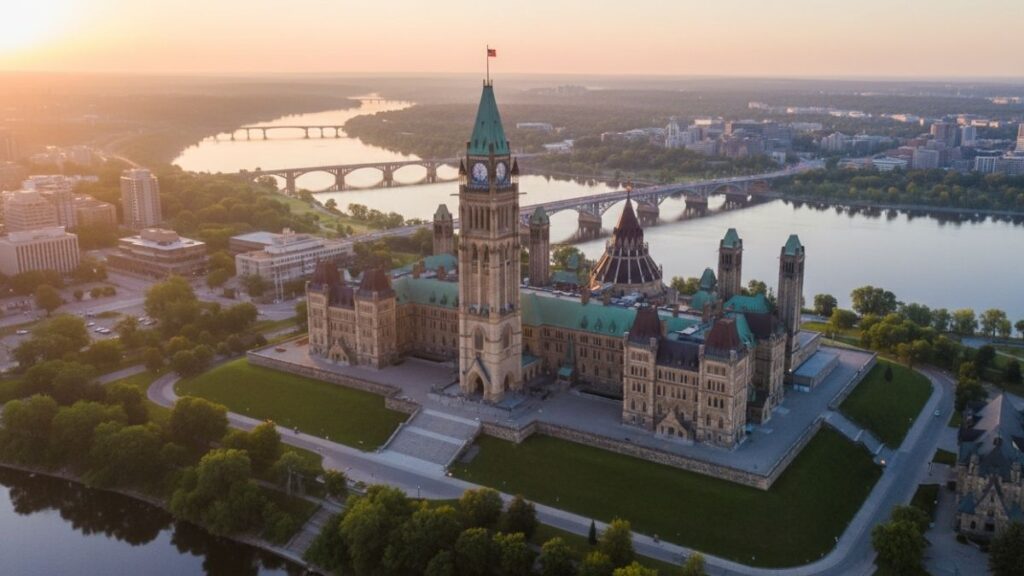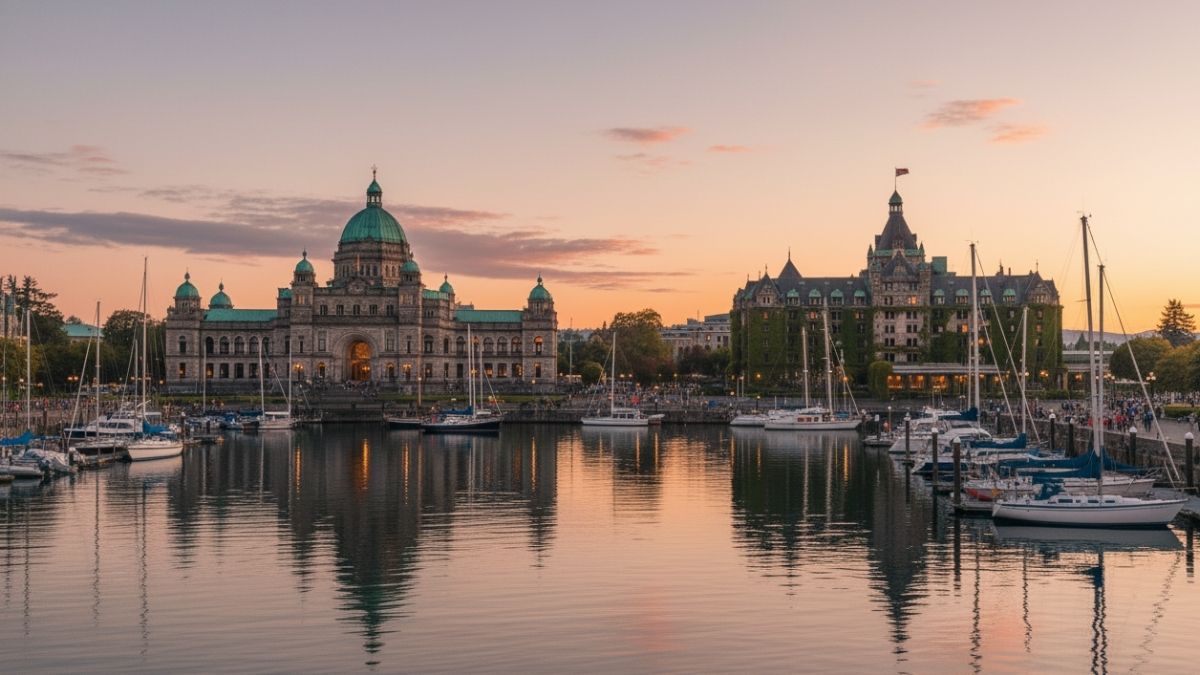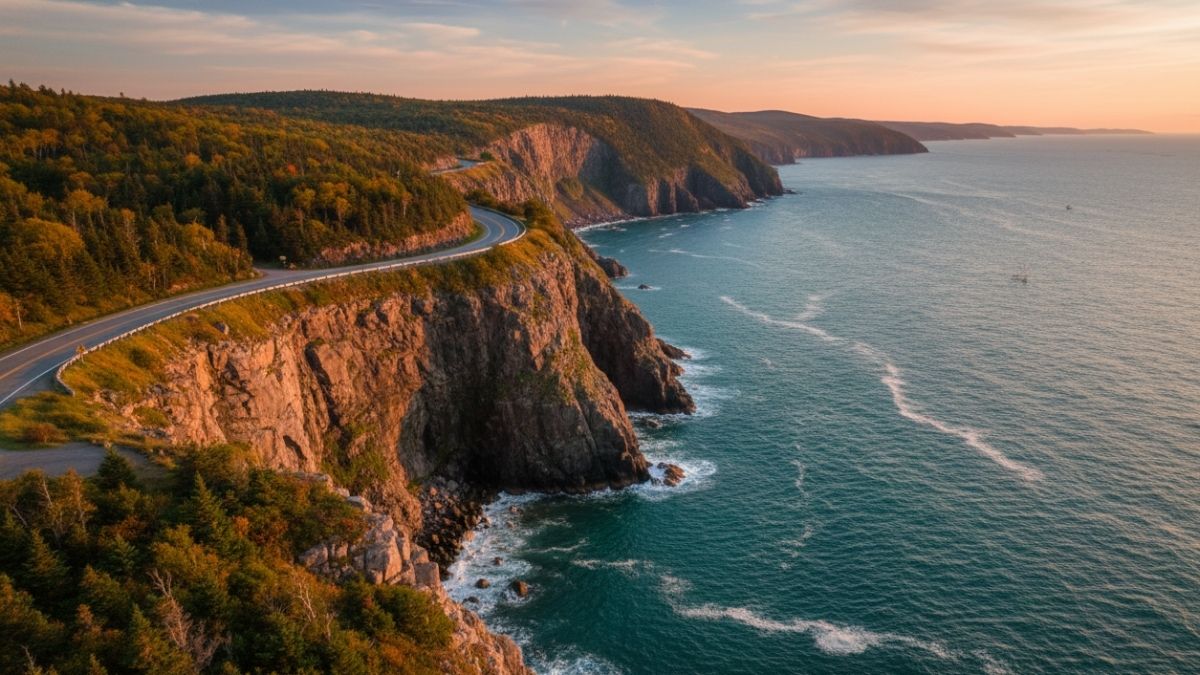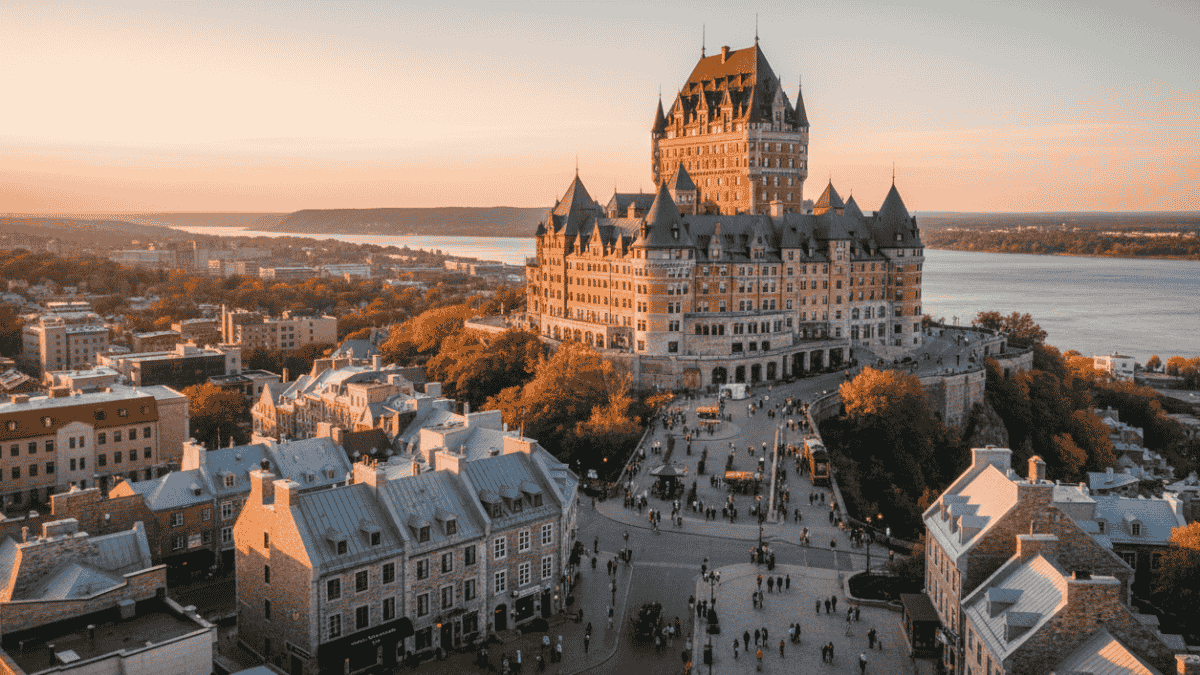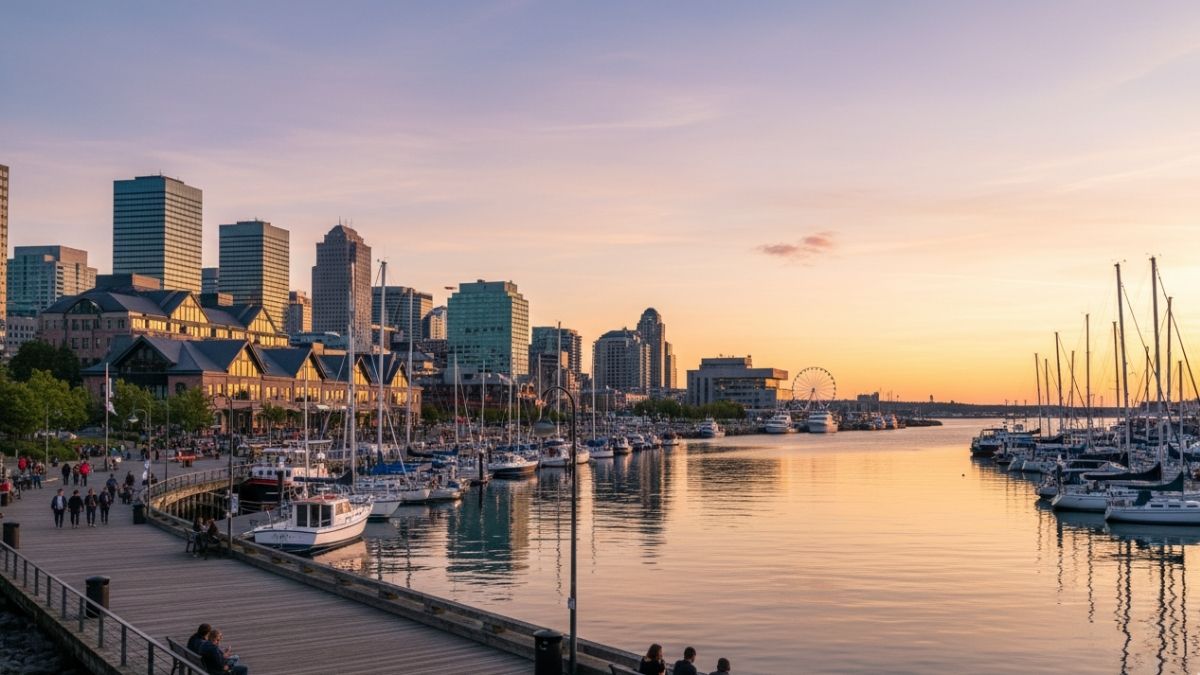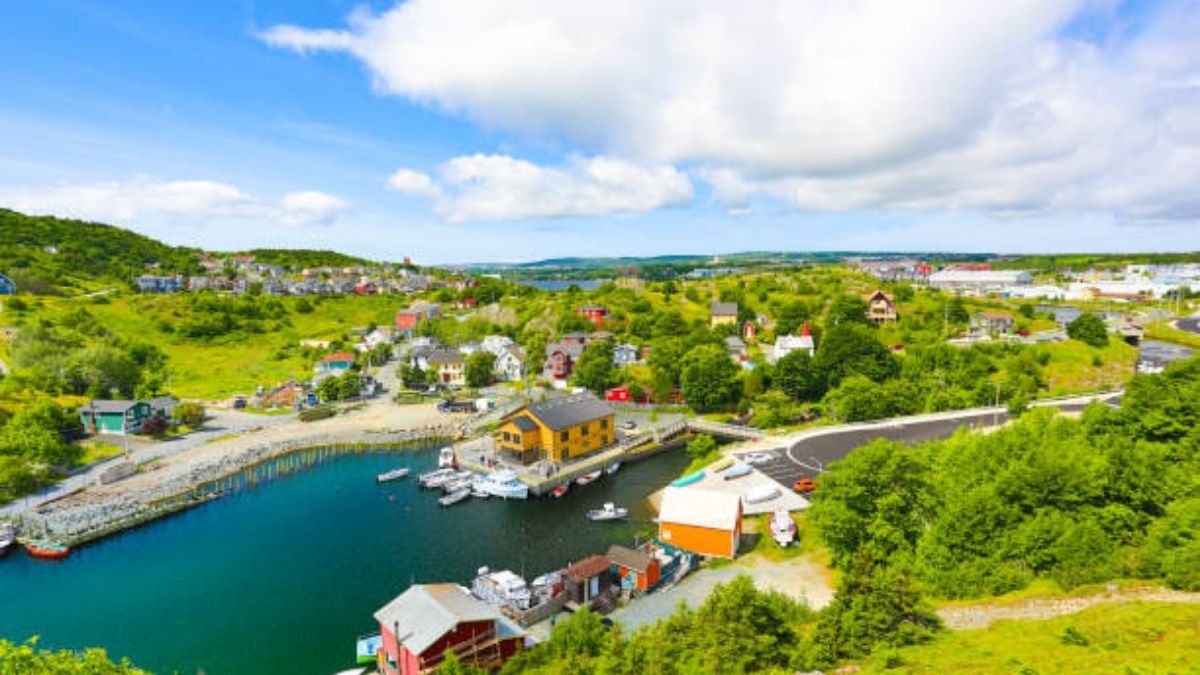Welcome to Ottawa, Canada’s dignified yet down-to-earth capital — where culture, history, and natural beauty meet along the scenic banks of the Ottawa River. If you’ve ever wondered, “Is Ottawa worth visiting?”, the short answer is yes — absolutely. Ottawa is not just about politics and Parliament. It’s about the rhythm of the Rideau Canal, the festivals that fill its streets, and the friendliness that makes every traveler feel at home.
This travel guide will help you plan your trip from start to finish — from the best time to visit Ottawa Canada to where to stay, what to see, and even what local laws tourists should know before they arrive. Whether you’re here for a weekend escape or a longer Canadian adventure, Ottawa will surprise you with its blend of charm and sophistication.
If you’d love the complete Ottawa experience — with detailed itineraries, local laws, sightseeing routes, and insider travel advice — grab your FREE Ottawa Travel Guide eBook today.
Prefer something to flip through? Order the paperback edition on Amazon or Lulu Bookstore.
Simply enter your name and email below to get instant access to your free download.
Planning your adventures just got easier with WorldTourGuide. And while you’re at it, don’t miss our Traveler’s Toolkit — trusted by explorers worldwide to plan smarter, pack lighter, and travel better.
The Geography and Historic Sites of Ottawa
Ottawa rests quietly along the border between Ontario and Quebec, where English and French cultures blend as smoothly as maple syrup on pancakes. It’s a city of green parks, graceful waterways, and deep-rooted stories.
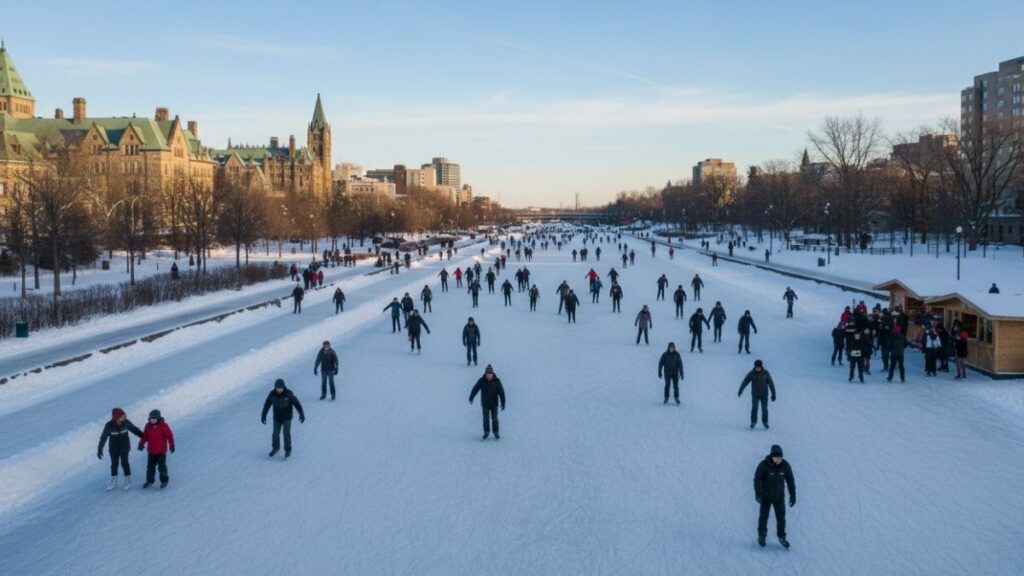
The Ottawa River defines the city’s rhythm, flowing past the stunning Parliament Hill — Canada’s political heart and architectural jewel. The gothic-style buildings, perched high above the river, are a photographer’s dream and a symbol of Canadian pride. Even under renovation, Parliament remains the centerpiece of Ottawa’s skyline.
The Rideau Canal, which winds right through the city, adds another layer of beauty. In summer, it’s lined with joggers, cyclists, and paddlers. Come winter, it transforms into the world’s largest naturally frozen skating rink. Glide past snow-covered trees, hot chocolate in hand, and you’ll see why locals love this tradition.
Not far away, the ByWard Market buzzes with energy. This historic district, dating back to the 1800s, is alive with food stalls, handmade crafts, and cozy cafes. Try a BeaverTail, the local fried pastry treat, before exploring the nearby boutiques.
Across the river in Gatineau, you’ll find the Canadian Museum of History, home to towering totem poles and sweeping Indigenous exhibits. Back in Ottawa proper, the National Gallery of Canada wows with its architecture, art collections, and the famous spider sculpture Maman guarding its entrance.
Ottawa is full of surprises, too — like Laurier House, where two prime ministers once lived, or the Diefenbunker, a Cold War-era underground shelter turned museum. Each stop adds another layer to the story of Canada’s capital — a city that never rushes you, but quietly invites you to explore.
When to Visit: Best Seasons & Events
Ottawa is beautiful year-round, but the best time to visit depends on what you love most. Here’s a quick look at what to expect each season — plus insights on Ottawa temperature by month and top events.
Spring (March–May): As winter melts away, tulips bloom across the city. The Canadian Tulip Festival in May fills parks with over a million flowers — a gift from the Dutch royal family after World War II. Temperatures hover between 8°C and 18°C (46–64°F), making it ideal for sightseeing with fewer crowds.
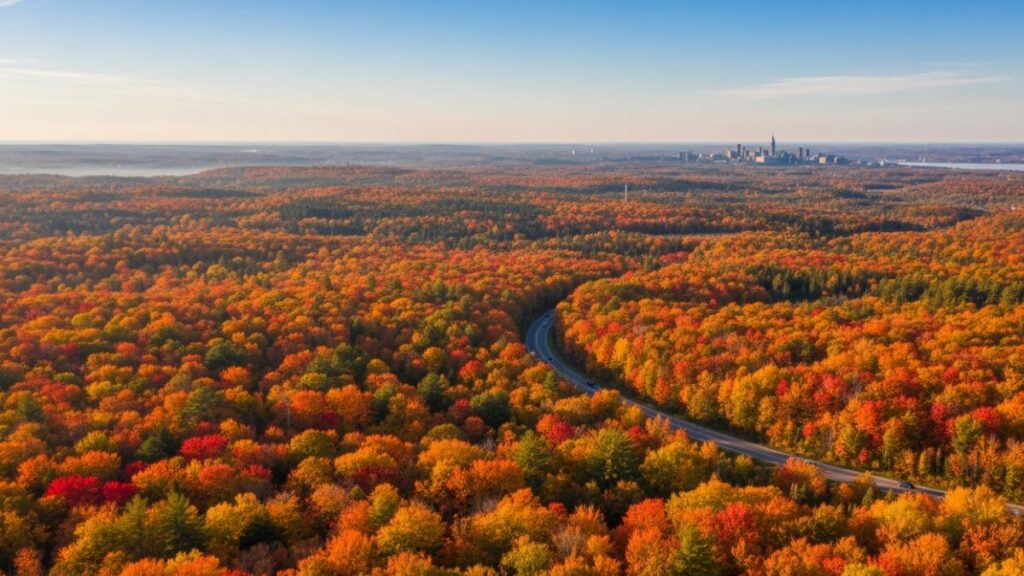
Summer (June–August): Warm, lively, and full of festivals. The city bursts with life during Canada Day (July 1), when Parliament Hill becomes a sea of red and white. Expect music, fireworks, and patriotic cheer. RBC Bluesfest followed soon after, bringing world-class artists to the Ottawa River’s edge. This is also the best time to kayak the canal or stroll through Major’s Hill Park.
Fall (September–November): Ottawa in autumn is breathtaking. Trees turn fiery shades of orange and gold, especially in Gatineau Park. The Fall Rhapsody event celebrates this natural masterpiece. It’s quieter, more affordable, and perfect for hiking, photography, and cozy evenings.
Winter (December–February): Bundle up — it’s cold, often below -10°C (14°F), but magical. The Winterlude Festival turns the city into a wonderland of ice sculptures, slides, and hot cocoa. And, of course, skating on the Rideau Canal Skateway is an unforgettable experience.
So, whether you prefer summer festivals, fall hikes, or snowy adventures, there’s no wrong time to visit Ottawa — just different kinds of magic.
How to Get There: Flights, Trains & Roads
Getting to Ottawa is straightforward no matter where you’re coming from.
✈️ By Air:
The Ottawa Macdonald–Cartier International Airport (YOW) is about 15 minutes from downtown. It’s smaller than Toronto’s airports but efficient and stress-free. Air Canada, WestJet, and Porter Airlines offer regular domestic and international routes.
🚆 By Train:
If you’re traveling from Toronto or Montreal, VIA Rail Canada connects directly to Ottawa. The journey from Toronto takes about 4.5 hours; from Montreal, just two. The ride is smooth, scenic, and perfect if you prefer comfort over driving.
🚗 By Car:
Driving gives you freedom to explore. From Toronto, expect a 4.5–5-hour drive along Highway 401 and 416; from Montreal, it’s just 2 hours via Autoroute 50 or Highway 417. Fall road trips are especially stunning.
🚌 By Bus:
FlixBus and Ontario Northland offer affordable bus rides into Ottawa. It’s a budget-friendly option for students or solo travelers, with Wi-Fi and reclining seats included.
No matter how you arrive, Ottawa’s compact layout makes getting around simple. You’ll find reliable public transit, walkable downtown streets, and plenty of bike paths.
Use the Destination Ontario Ottawa guide to plan your travel logistics and see suggested itineraries.
N.B.: If you organize your trip early and pack smart using our recommended travel gear essentials and trusted travel partners below, you’ll skip the “I wish I knew” stress. From booking flights to finding the best travel deals, these are the gears that make every journey smoother — and save you money while you’re at it.
Parliament Hill & Monuments Tour
You can’t visit Ottawa without standing on Parliament Hill. This is where Canada’s laws are made and where its national pride shines brightest.
Book a free guided tour in advance to explore the House of Commons and Senate. In summer, don’t miss the Changing of the Guard ceremony — a lively, colorful display that brings history to life.
At the base of the Hill, the Centennial Flame burns year-round, symbolizing unity across Canada’s provinces. Walk the grounds to discover monuments like the Women are Persons! statue and tributes to prime ministers and Indigenous leaders.
And when evening falls, return for the Northern Lights Sound and Light Show — a breathtaking projection on Parliament’s walls that tells the story of Canada through light and music. It’s completely free and unforgettable.
Museums Overview
Ottawa has some of the best museums in Canada — each one telling a different story.
- Canadian Museum of History (Gatineau): Dive into Canada’s Indigenous heritage, colonial history, and cultural milestones.
- National Gallery of Canada: A must for art lovers. Don’t miss the iconic Maman spider sculpture outside.
- Canadian War Museum: A deeply moving look at Canada’s military history and peacekeeping missions.
- Canadian Museum of Nature: Perfect for families — dinosaurs, whales, and dazzling minerals fill the halls.
- Canada Aviation and Space Museum: Explore vintage aircraft, fighter jets, and space artifacts.
- Canada Science and Technology Museum: Interactive exhibits that make learning fun for all ages.
- Bank of Canada Museum: A fascinating, free museum about money, trade, and the Canadian economy.
Most museums are within walking distance or a quick transit ride from downtown, and many offer free admission on Thursday evenings — ideal for travelers on a budget.
For more planning resources, check the official Ottawa Tourism website to explore top attractions and visitor services.
Best Areas to Stay: Pros & Cons
Where you stay in Ottawa shapes your experience. Here’s a quick overview:
- Downtown / ByWard Market: The liveliest area — close to Parliament, markets, and nightlife. Perfect for first-time visitors. (Can be pricier and busier.)
- Centretown: Balanced and local, with plenty of cafes and boutique hotels. (Less nightlife, but peaceful.)
- The Glebe: Trendy and family-friendly, near Lansdowne Park. (Limited hotel options.)
- Westboro & Hintonburg: Artsy, hip, and full of great food spots. (A bit farther from main attractions.)
- Kanata & Orleans: Suburban comfort for families and road trippers. (Far from downtown.)
- Hull (Gatineau): Affordable and just across the river in Quebec. (French-speaking area, but friendly and welcoming.)Wherever you stay, Ottawa’s neighborhoods are clean, safe, and easy to navigate.
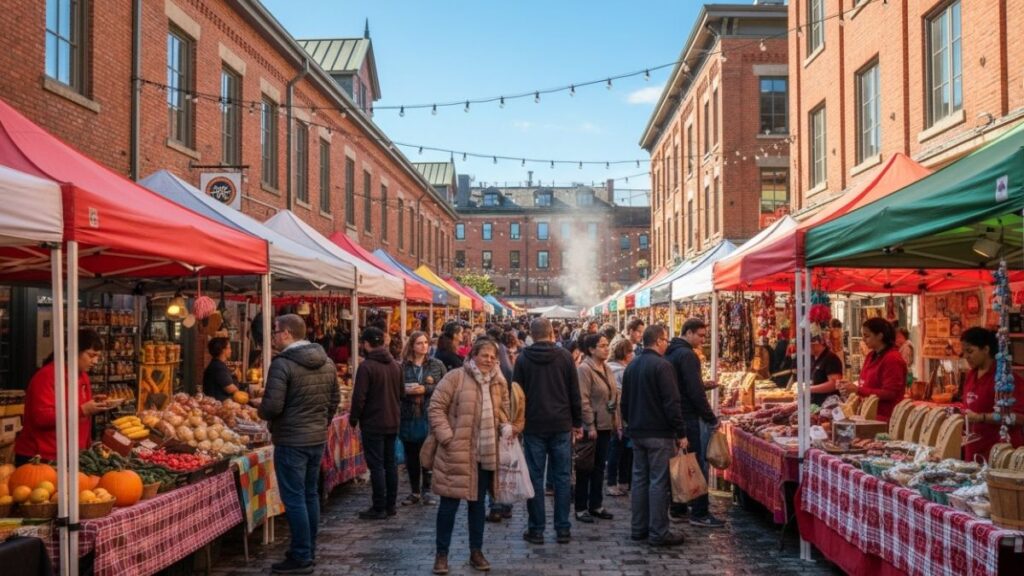
Laws Tourists Should Know
A few quick rules to keep your trip stress-free:
- Drinking in public: Not allowed outside licensed areas. Buy alcohol only at LCBO or Beer Store locations.
- Cannabis: Legal for adults 19+, but not permitted in vehicles or near schools.
- Smoking: Prohibited near entrances, playgrounds, and patios.
- Driving: Speed limits are in km/h. Don’t use your phone while driving.
- Tipping: 15–20% is expected in restaurants and service industries.
Following these small guidelines will help you blend right in with the locals.
Tips for Staying Safe and Aware
Ottawa is one of the safest cities in Canada, but it’s always smart to stay alert. Stick to well-lit streets after dark, especially near ByWard Market. Keep valuables tucked away, and use licensed taxis or rideshares only.
Winters can be icy, so wear good boots. Summers can get hot, so carry water. And always trust your instincts — if something feels off, move to a busier spot.
If you ever need help, dial 911 for emergencies or 613-236-1222 for non-urgent police matters.
For local regulations, visitor information centres, and city maps, refer to the City of Ottawa’s official website.
Tipping, Taxes, and Payment Practices
Here’s what you need to know before you pay:
- Tipping: 15–20% at restaurants, bars, taxis, and salons.
- Sales Tax: Ottawa has a 13% HST (Harmonized Sales Tax) added at checkout.
- Cards Accepted Everywhere: Visa, Mastercard, and contactless payments are the norm.
- Cash Tips: Keep small bills or coins (“loonies” and “toonies”).
And remember — always calculate your tip before tax.
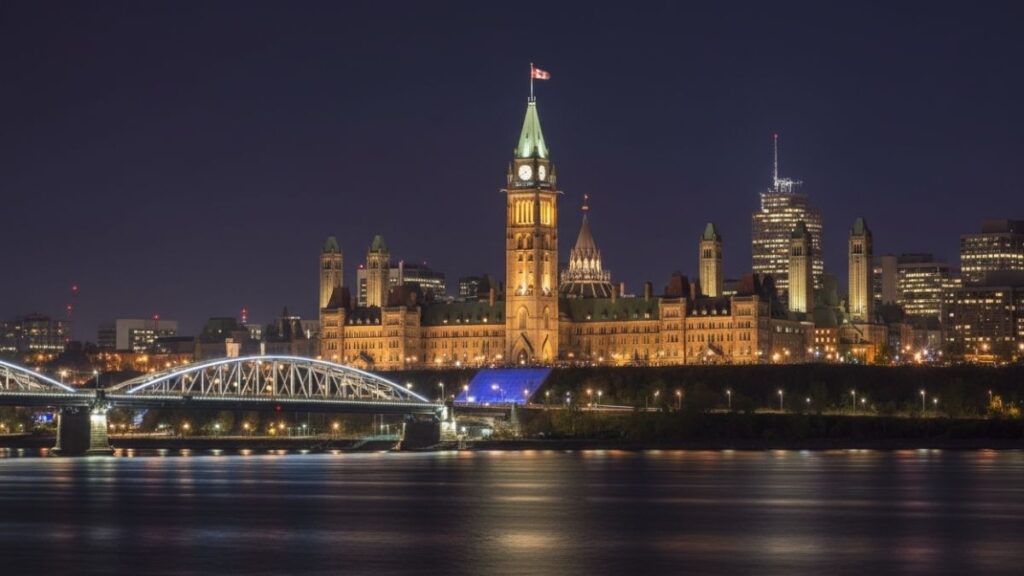
Before we wrap up this travel guide, here’s something exciting you won’t want to miss!Our travel media agency, WorldTourGuide, has officially launched a Sponsored Trip Program — a one-of-a-kind opportunity where our most active fans, like you, can earn the chance to explore their dream destination.
If you’re ready to see where this adventure could take you, click below to learn how the program works and find out how you can join this purpose-driven travel experience. And that brings our Ottawa travel journey to a beautiful close!
Wishing you safe travels and unforgettable moments as you stand before Parliament Hill at sunset, glide down the Rideau Canal, and sip coffee in the ByWard Market.
📘 Don’t forget your FREE Ottawa Travel Guide eBook — if you missed it earlier, simply enter your name and email below to get instant access.
You’ll also receive future updates, insider travel tips, and exclusive offers from WorldTourGuide to help you plan smarter, explore deeper, and travel better.
